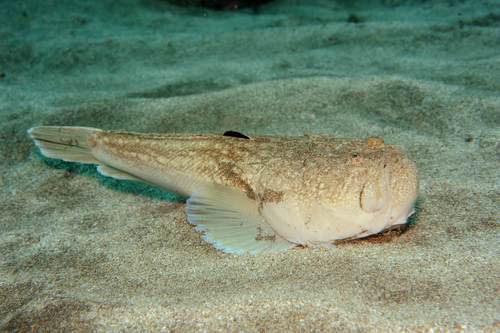
Stargazer
The Atlantic Bluefin Tuna (*Thunnus thynnus*) is a majestic and powerful fish, renowned for its size, speed, and commercial value. This highly migratory species plays a crucial role in the marine ecosystem. However, its populations have faced significant declines.
5 7 years
Lifespan
20 - 35 cm
Length
Least Concern
Conservation Status
15 km/h
Swimming speed
Carnivorous
Diet
Local Migration
Migration
Appearance Overview
The Atlantic Bluefin Tuna is renowned for its large, torpedo-shaped body, built for speed and endurance. It exhibits a striking metallic blue on top and a shimmering silver-white on its underside.
Coloration
Dark metallic blue above, silvery-white below
Body Shape
Torpedo-shaped, streamlined
Fins
Two dorsal fins, the first retractable; small, yellow finlets running from dorsal and anal fins to the tail
Keels
Strong keels on the side of the caudal peduncle
Length
Up to 13 feet (4 meters), commonly 6.5 feet (2 meters)
Weight
Up to 1,500 lbs (680 kg), commonly 550 lbs (250 kg)
Diet
Carnivorous, feeding on a variety of fish (such as herring, mackerel, and hake), squid, and crustaceans.
Feeding Behavior
Highly active predator that hunts by sight, often using bursts of speed to capture prey. They may also feed cooperatively, herding smaller fish into tighter formations.
Social Behavior
Forms schools, often segregating by size. They are highly migratory, capable of crossing entire ocean basins.
Commercial Relevance
Extremely high value, especially in sushi and sashimi markets, where its fatty flesh is highly prized. This demand drives significant fishing pressure.
Conservation measures
Subject to international fishing quotas and regulations managed by organizations like ICCAT. Measures include minimum size limits, fishing seasons, and monitoring programs. Marine Protected Areas also play a role.
Status
Endangered (Varies by population; some stocks are more depleted than others)
Threats
Overfishing (historically and ongoing), bycatch in fisheries targeting other species, climate change affecting prey distribution and spawning habitats.
Habitat Distribution
Depth Range
Primarily epipelagic and mesopelagic, from the surface to depths of 1,600 feet (500 meters), and occasionally deeper to 3,300 feet (1000 m).
Geographic Range
Found throughout the North Atlantic Ocean, including the Mediterranean Sea. Two main spawning grounds exist: the Mediterranean Sea and the Gulf of Mexico.
Preferred Environment
Prefers temperate and subtropical waters. Undertakes long migrations across the Atlantic, following prey and seeking suitable spawning conditions.
Reproduction and Life Cycle
Breeding Habits
Spawns in warm waters, primarily in the Mediterranean Sea and the Gulf of Mexico. Spawning typically occurs from May to July in the Gulf of Mexico and June to August in the Mediterranean.
Development Stages
Eggs are pelagic (free-floating). Larvae develop rapidly, feeding on plankton. Juveniles grow quickly, eventually joining schools of similar-sized fish.
Fecundity
Highly fecund; a large female can release up to 30 million eggs per spawning season. The eggs are fertilized externally.
Maturity Age
Reaches sexual maturity at around 4-8 years of age, although this can vary between populations.
Faqs about Stargazer
How long do Atlantic Bluefin Tuna live?
Atlantic Bluefin Tuna can live up to 40 years, although this is becoming less common due to fishing pressure.
How fast can Atlantic Bluefin Tuna swim?
They are among the fastest fish in the ocean, capable of short bursts of speed up to 43 mph (70 km/h).
Are Atlantic Bluefin Tuna warm-blooded?
Yes, they are warm-blooded, which allows them to maintain a higher body temperature than the surrounding water, aiding in muscle efficiency during hunting and migration.
What is the biggest threat to Atlantic Bluefin Tuna?
The primary threat is overfishing, driven by high demand for their meat. Illegal and unreported fishing also poses a significant challenge.
Which organization manages Bluefin Tuna populations?
ICCAT (International Commission for the Conservation of Atlantic Tunas) is the primary body responsible for managing Bluefin Tuna stocks.
Are Bluefin Tuna populations recovering?
While some populations are showing signs of recovery due to strict management, others remain severely depleted. The overall status is still precarious.
Copyright @ Nature Style Limited. All Rights Reserved.
 English
English